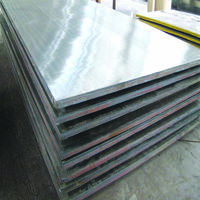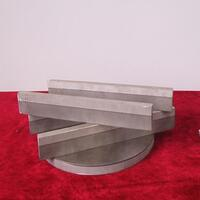1. Introduction
Just 24 hours ago, global architecture circles buzzed with news of a new mixed-use development in Copenhagen featuring a striking zinc clad dormer and corten steel facade—a testament to the rising demand for durable, aesthetically bold metal clad exteriors. As cities prioritize sustainability and longevity, metal cladding has surged from industrial utility to architectural statement.

But what exactly does ‘metal clad‘ mean? At its core, metal clad refers to a composite material or system where one metal (or alloy) is bonded—mechanically, metallurgically, or through electroplating—to another for enhanced performance, corrosion resistance, or visual appeal. Whether it’s a metal clad wall on a modern home, a steel clad building in an urban center, or even metal clad electrical wire in commercial infrastructure, this technology bridges function and form.
2. Understanding Clad Metal Meaning and Variants
The term ‘clad metals’ encompasses a wide spectrum of engineered materials. In construction, ‘metal clad’ often describes exterior surfaces like metal clad siding or a metal clad roof. In manufacturing, it might refer to aluminum clad stainless steel sheets or copper-clad wires.
- Aluminum clad steel combines the strength of carbon steel with the corrosion resistance of aluminum, commonly used in automotive and aerospace sectors.
- Stainless clad aluminum reverses the layering for specialized heat exchangers.
- Titanium clad plates offer extreme durability in chemical processing environments.
These combinations leverage the best properties of each metal while mitigating weaknesses—like rust in mild steel or cost in pure titanium.
3. Architectural Applications: From Facades to Roofs
Modern architecture increasingly embraces metal clad exteriors for their sleek lines and low maintenance. Popular choices include corrugated steel facade panels for industrial lofts and vertical standing seam metal siding for minimalist homes.

Corten steel siding has gained traction for its weathering properties—the rust-like patina acts as a protective layer, eliminating the need for painting. However, corten siding cost remains higher than alternatives, typically ranging from $8 to $15 per square foot installed.
Zinc metal siding and zinc clad roofs offer similar self-healing oxide layers and are prized for longevity—often exceeding 80 years. Meanwhile, copper siding develops a distinctive green verdigris over time, adding historic charm to contemporary builds.
Systems like PAC CLAD standing seam roofing and PAC CLAD coping provide seamless, watertight solutions for commercial projects, with options like PAC CLAD HWP (High Wall Panel) and column covers enhancing both aesthetics and weather resistance.
4. Industrial and Electrical Uses of Metal Clad Systems
Beyond buildings, metal clad plays a critical role in infrastructure. Metal clad electrical wire—often armored with aluminum or steel sheathing—is widely used in commercial settings, including Pennsylvania, where code compliance requires robust protection against physical damage.
Aluminum clad pipe insulation shields HVAC systems from thermal loss and moisture, while metal clad insulation wraps industrial ducts in refineries and power plants.
In electronics, cu clad wire (copper-clad wire) ensures high conductivity with added tensile strength. Similarly, aluminum clad steel wire is common in grounding and telecommunications.

For heavy-duty applications, clad steel plates—such as boiler plate steel with chromium electroplating or chrome carbide overlay—are used in mining and oil drilling to resist abrasion and corrosion.
5. Material Comparison: Performance, Cost, and Sustainability
Choosing the right metal clad type depends on environment, budget, and design goals. Corten steel plate excels in dry climates but may stain adjacent surfaces in wet regions. Zinc coated or galvanized steel offers a lower-cost alternative but lacks the premium finish of zinc metal siding.
Stainless steel plate grades like 316 or 316L provide superior corrosion resistance near coastlines, though at a higher price point. For decorative elements, brass plates for engraving or bronze plate accents add warmth without sacrificing durability.
Alloy-clad options—such as 2024-T3 clad aluminum or 7075-T6 clad sheets—deliver high strength-to-weight ratios for aerospace use, while Inconel 625 weld overlays protect components in extreme temperatures.
Sustainability is a growing driver: many metal clad systems are fully recyclable, and materials like Colorbond standing seam or aluminum diamond tread plate contribute to LEED-certified builds through longevity and reduced maintenance.
6. Conclusion
From the rugged elegance of a corten steel facade to the precision engineering of aluminum clad stainless steel, metal clad technologies continue to redefine durability and design across industries. Whether you’re constructing a metal clad house, insulating pipes with aluminum clad sheet, or specifying a steel base plate with nickel sulfamate plating, understanding the nuances of clad metal meaning and application ensures smarter, longer-lasting outcomes. As seen in Copenhagen’s latest build—and countless projects worldwide—metal clad isn’t just functional; it’s the future of resilient design.
Our Website founded on October 17, 2012, is a high-tech enterprise committed to the research and development, production, processing, sales and technical services of ceramic relative materials such as Metal. Our products includes but not limited to Boron Carbide Ceramic Products, Boron Nitride Ceramic Products, Silicon Carbide Ceramic Products, Silicon Nitride Ceramic Products, Zirconium Dioxide Ceramic Products, etc. If you are interested, please feel free to contact us.
